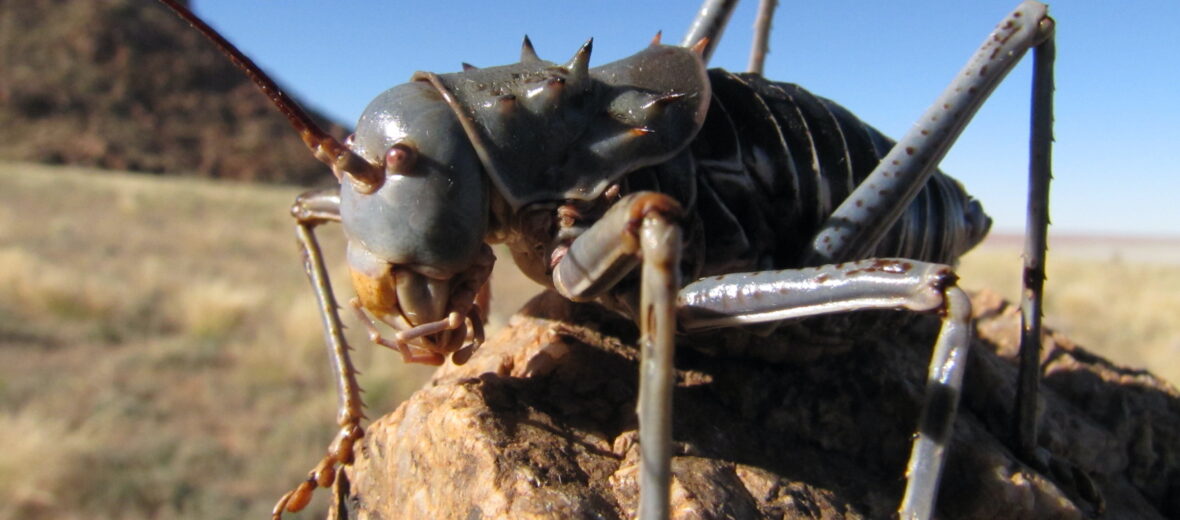
The armored cricket, aka koringkrieke, armored bush cricket, armored ground cricket, corn cricket, armored katydid, or setotojane, is an insect native to Botswana, Namibia, Zimbabwe, and South Africa. These “crickets” are actually more closely related to katydids. They have a few tactics to deter predators. Including a nice bite. They also eat nearly everything in site. Due to their numbers and the fact that they are considered a pest species, these insects are listed as Least Concern by the IUCN.
First the Stats…
Scientific name: Acanthoplus discoidalis
Length: Up to 1.96 inches
Lifespan: Up to 1 year
Now on to the Facts!
1.) These insects are omnivores, eating everything from plant matter, to baby birds, to carrion (dead animals).
2.) Their predators are many and even include humans.
3.) The first line of defense is a spike covered thorax.
4.) Armored crickets have a second line of defense too, their bite. The bite of an armored cricket is strong enough to draw blood.
5.) Another defense mechanism is to rub body parts together in what is called stridulation. This produces a loud noise that hopefully deters predation.
But wait, there’s more on the armored cricket!
6.) If spikes, biting, stridulation, or hopping away doesn’t work, they will vomit on themselves and others.
7.) These armored critters are also cannibalistic (they will happily eat each other). And will attack one another, for food, if supplies and salt get low.
Did you know…?
In what is called autohaemorrhaging, these crickets can squirt haemolymph from pores in their exoskeleton. They can reach up to a 3 inches away.
8.) Males will offer a large nuptial gift called a spermatophylax. This is a large package of food, coupled with their spermatophore.
9.) The male will also prefer to mate with the lighter colored virgins as this guarantees more of his offspring will survive.
10.) These critters are considered a pest insect, due to their propensity for crop destruction.
Now a Short Armored Cricket Video!
Be sure to share & comment below! Also, check out the Critter Science YouTube channel. Videos added frequently!
Want to suggest a critter for me to write about? Let me know here.



